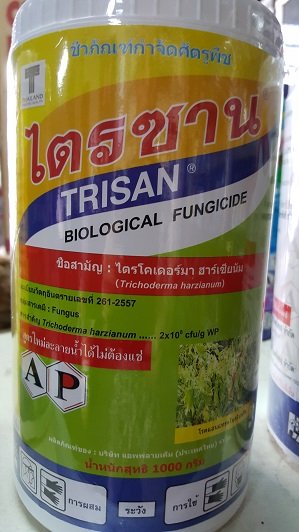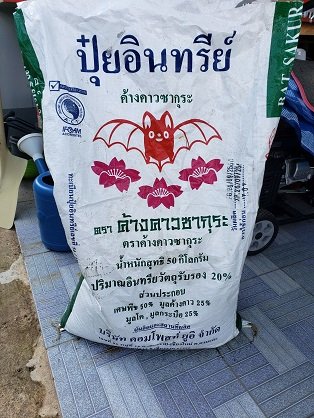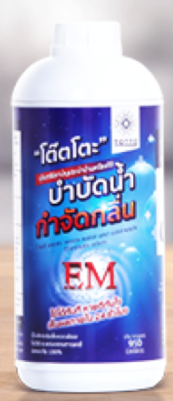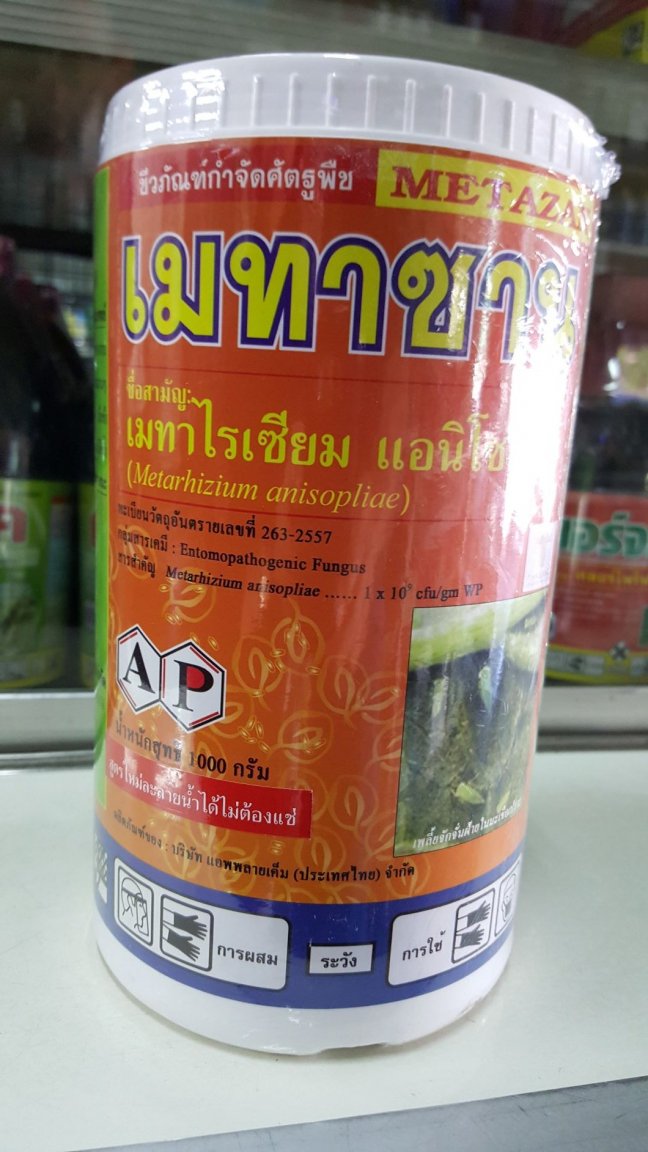
drtreelove
Advanced Member-
Posts
1,933 -
Joined
-
Last visited
Content Type
Events
Forums
Downloads
Quizzes
Gallery
Blogs
Everything posted by drtreelove
-
Anyone doing raised bed gardening?
drtreelove replied to csaba81's topic in Farming in Thailand Forum
Not my thing, I prefer 'in the ground' bio-intensive system. But there are good reasons as stated for raised beds for some folks, if you can afford the higher costs for initial construction and soil imports. Tons of info with an Internet search: "raised bed vegetable gardening for beginners". -
This is of course a viable conventional approach for commercial growers who are not yet on board with modern ecological farming methods and materials and efforts to adopt practices that are more earth and climate friendly. A losing battle maybe, but some of us think its important to try. From your countryman Dr Christine Jones, Australian soil microbiologist (https://amazingcarbon.com/) cover cropping orchards and vineyards https://youtu.be/PJs8GU1cG30?si=aKmMgXp1oCSDH112 why change https://youtu.be/SYRpFqUlK78?si=iUJnvKVDJtGt5boK
-
First recommendations: 1. Review and improve your watering program for during the dry season. Not too much or too little. Drought-stressed trees will be more susceptible to pests and diseases, decline and die-back. https://www.fertileearthlandcare.com/watering-trees/ 2. Soil fertility. Avoid high NPK chemical fertilizers. Use biologicals, real compost, vermicompost/worm-castings, aged/composted manures, COF (complete organic fertilizer), hydrolized fish fertilizer, and mulch the soil surface throughout the tree root zone (dripline and more). This may be practical for small home orchards, but larger commercial orchards must consider costs of inputs and more economical alternatives like well managed mixed-species cover cropping. Some examples of local Thailand sources for biologicals: COF and Vermicompost https://www.facebook.com/bestgardenstate/ https://maruchubussan.co.th/product/takumi-organic-fertilizer/ https://maruchubussan.co.th/product/fish-amino-organic-fertilizer/ 3. Biocontrols With good watering and soil restoration practices in place, then biological fungicides and botanicals can be used with greater effectiveness. (They are not a stand-alone substitute for chemical fungicides, they don't work in the same way. They must thought of as components in a comprehensive IPM program.) Bokashi fertilizer.docx
-
That's a very thorough paper on Mango Athracnose Disease. Read the entire article and recognize that its never a good idea to reach first for chemical treatments, cypermethrin or bordeaux mixture or any other quick fix dreams. In my professional opinion, based on over 50 years as a tree care professional, as my father before me, that its always best, for any pest or disease problem to look first at the growing conditions, soil and water management to determine why that pest or disease is there in the first place and what you are doing or not doing to create the conditions that make those trees susceptible to biotic and/or abiotic disorders. Because healthy plants grown in heathy soil don't get pests or diseases, and that is a well established scientific and practical truth of IPM (Integrated Pest Management) and the Soil-Food-Web, Regenerative Ag movement. "The mango trees are all grafted varieties planted by us..." Recognize that grafted varieties are usually bred for desireable fruit characteristics and often not so much for resistance to disease. This is a critical factor in IPM. Chemical fungicides should not be depended on as a stand-alone, or a long term treatment. IPM considers a much wider viewpoint, especially the environmental and cultural factors that contribute to resistance or susceptibility. If you don't improve the growing conditions and management of watering, soil and plant health, then you are fighting a losing battle. Also, if you are using high salt index, high NPK chemcial fertilizers, are not mulching and/or cover cropping, then the problems will be exacerbated. And if it's not one thing (MAD), it will be another ("There is also a problem with what I believe to be leaf cutting weevils.") From the article: "Alternatives to fungicides have been developed in light of rising awareness of the fungicides’ deleterious effects on human health, the presence of fungicide residues in mango fruits, and the contamination of the natural environment that results from their widespread use. Essential oils, botanicals, and oxalic acid treatments have all been shown to be effective alternatives to chemical control, especially in locations where the use of synthetic fungicides is prohibited. Microbial agents and biological control of the MAD have also broadened developmental prospects for establishing environmentally friendly pest management." If you are still reaching for chemical treatment as the first response to plant problems, then you are way behind the times with modern plant science and environmental, biological awareness and practical treatment modalities. Biologicals 101.pdf
-
Request help on Lamyai farming
drtreelove replied to timberpond's topic in Farming in Thailand Forum
Start with an on-site assessment from an experienced grower/orchard manager to evaluate current status and available water and other resources. I may be able to help myself or with a referral. PM me. Structural pruning may be one of the first remedial measures to consider. Cover cropping for soil restoration is another. cover cropping orchards and vineyards https://youtu.be/PJs8GU1cG30?si=aKmMgXp1oCSDH112 -
Interesting! Tell us more. What province is your farm located in? What are you growing? Commerical crops, or for your own consumption? What soil improvement methods and inputs are you using? And how does this 'Internet of Things' work with your farming.
-
Excellent new blog article on composting from Graeme Sait, Australian agronomist and educator. https://blog.nutri-tech.com.au/composting-choices-aerobic-vs-anaerobic The EM from Organic Totto that is now widely available in Thailand, at Home Pro, is based on the formula from Dr Higa that is mentioned in this article. This can be used in place of BAM and is one of the best Thai brands of EM in my opinion. I buy a liter of EM and a liter of molasses (also from HomePro) and brew it for a week in a 20 liter jug. (Note: Molasses can be found in the garden section at Home Pro, but the Organic Totto EM is in the household cleaners and pesticide section)
-
Laying Japanese grass on top of concrete?
drtreelove replied to JeffersLos's topic in Plants, Pets & Vets in Thailand
That would be a short term plan, a few weeks to a few months at best. Without drainage - root rot, yellowing and mortality will occur. Go with plastic grass. -
"Never flowered or grown fruit" - is exactly what you can expect from "pips just spat out". Desireable citrus varieties are grown on grafted trees with proven root stock. And with good soil and water management. The citrus in the photos are severely chlorotic, indicating poor soil fertility, suppression by crowding with the ginger, and other aspects of managment.
-
https://www.homefortheharvest.com/best-tasting-apples/#:~:text=Some of the best-tasting,a few months of harvest. But flavor is not just about the variety, but how it is grown. You're not likely to find an organic, high nutrient density, soil food web conscious, regenerative ag apple grower in Prachuap Khiriikhan or anywhere in Thailand. The supermarkets will have imports that are grown like you say, for appearance and shelf-life. Look for a special order.
-
Ha Ha, lazy man! Market bought oranges and other chemically grown food are unlikely to be healthy and high nutrient density. Grow your own with good soil fertility and water management. Orange trees have 'nice' fragrant flowers
-
https://www.gardeningknowhow.com/edible/fruits/oranges/oranges-splitting.htm Obtain a soil moisture meter, to take the guesswork out of when to water. Fertilize with Takumi Fish Fertilizer https://maruchubussan.co.th/product/fish-amino-organic-fertilizer/ to go all-out for best plant health care, add a biostimulant- inoculant; liquid worm castings effluent, from MaeJo University Cannabis Farm worm compost operation. At MJU Farm. I hope that helps. Don
-
Good guess but I don't think so in this case. No corky raised lesions and no lesions on foliage reported. I think its Citrus rust mite (silver mite)—Phyllocoptruta oleivora Damage The mite and its feeding damage generally occur on the outside surface of fruit that is 1/2 inch or more in diameter. Feeding damages rind cells and causes the fruit surface to become silvery on lemons, rust brown on mature oranges, or black on green oranges. Most damage occurs from late spring to late summer, but does not hurt the internal quality of the fruit. Solutions Predaceous mites, dustywings, and mite midges prey on citrus rust mite. It is not known if these are important in the biological control of this pest, but natural enemies are responsible for preventing many potential pests in citrus from becoming a problem. To improve the effectiveness of biological control, control ants, minimize dust (e.g., periodically hose off small trees), and avoid the application of broad-spectrum, persistent insecticides and miticides for all citrus pests.
-
Chiangmai Sriyont288 Thanon Charoen Rat excellent service dept too
-
Yes. Glyphosate solution with 20 to 25% active ingredient is the most effective, if applied immediately according to directions for "cut stump" treatment. (48% glyphosate active ingredient, diluted 50:50 with water) There is nothing else like it. It is a systemic herbicide and will translocate throughout the plant tissues and kill the root system. Used this way on the outer circumference (sapwood) of the cut stump surface has the least environmental contamination. No need for drilling, motor oil or other variations. Don't overspray onto the soil or nearby plantings. Caution: glyphosate will readily translocate through root grafts to nearby trees of the same species. So if you have a situation where you want to kill some, leave some, use another method. BTW, no longer at HomePro, but check the independent plant markets outside in driveway/parking lot area. I don't think triclopyr is available, but if so it will be a lot more expensive and usually requires repeat treatment. https://growitbuildit.com/how-to-stop-tree-stumps-from-sprouting/#:~:text=In order to kill tree,no new sprouts will emerge.
-
The remarkable Australian soil microbiologist Dr Christine Jones does it again. Extraordinary presentation of revelationary information for growers and livestock ranchers: https://youtu.be/DLoWXE81OKw Attachments area Preview YouTube video RAMP CH Guest Lecture Presentation: Christine Jones
-
Cost of turf in phuket
drtreelove replied to reddo1973's topic in Organic Farming, Smallholding and Kitchen Gardening
No answer for you yet. I don't know about Phuket, but in Chiang Mai it goes for about 20 to 25 baht for a half sqm rectangle section. Soil preparation is everything for successful establishment, so you could spend more than that on rototilling and compost and top-dressing to do it right. -
B.t. maybe, but not kurstaki, that's specific for lepidoptera, moth larvae. Use that for budworms. Other strains of B.t. can affect beetle larvae, if you can get them to eat it. National Pesticide Information Center: How does Bt work? Spores made by Bt damage the gut of insect larvae after the larvae eat them.2 The insect gut must have a pH of 9.0 to 10.5 (high pH) in order to activate the toxin.2,10 This is different from the human gut, which has a low pH and is more acidic. The activated toxin breaks down the insect's gut lining. The insect larva dies of infection and starvation.10,11,12 Death occurs within 1-5 days.10,12 Young insect larvae are most affected.1 Each type of Bt toxin is specific to the target insect family.2,3 Some strains of Bt toxins are also toxic to nematodes.1 Common types of Bt strains: Bt israelensis controls immature mosquitos, flies, and gnats.2 Bt aizawai and Bt kurstaki controls caterpillars of moths and butterflies.2 Bt tenebrionis and Bt japonensis control beetle larvae.2,3 Bt san diego controls beetle larvae.3
-
Two other biological control agents for beetle grubs that are definitely available in Thailand; (the pics attached are from products on the shelf at an ag shop in MaeJo, Chiang Mai.) https://biocontrol.entomology.cornell.edu/pathogens/Metarhizium.php https://en.wikipedia.org/wiki/Beauveria_bassiana IPM preventive management methods can include sanitation, cleaning up piles of wood and green waste, netting compost piles and the soil surface around your plants where adult beetles emerge from pupa stage and fly to new sites to breed and lay eggs that become the larvae that feed on the plant material.
-
"The Wonders of Wood Vinegar"
drtreelove replied to drtreelove's topic in Organic Farming, Smallholding and Kitchen Gardening
Great story and pics, with the reality of challenges and successes. This is a brilliant approach: "Started with whatever I could find of organic material, sawdust, grass, water hyacinths that I spread on the land. With plenty of cow manure on that I started to grow sesbania and other fast growing legumes that shaded the land and gave grass a chance to cover the dirt. Chop and drop of the legumes gave some more organic matter to the soil and slowly a thin layer of living soil built up. Different "weed plants" moved in, was regularly cut and contributed to the soil buildup." Mealy bugs are challenge for certain plantings and conditions. Avoid high salt index, high NPK chemical fertilizer like 15-15-15 (which creates foliar biochemisty that is a pest magnet), and keep up with the building of soil fertility. I've found that blast-washing off of heavy mealybug infestations can be fairly easy for small plantings, papayas, plumeria and other succeptible plants, and significantly knocks the numbers down, where you can reach the plants with a water hose with jet nozzle. For larger commercial plantings it may not be practical unless you have a mobile sprayer. As with any pest control method, start early with prevention and early intervention, don't wait for a heavy advanced infestation to develop, which can be much more difficult to control . https://www.planetnatural.com/pest-problem-solver/houseplant-pests/mealybug-control/#:~:text=Found in warmer growing climates,sap out of the tissue. Beauveria bassiana, is available in Thailand You can make your own insecticidal soap. Homemade Insecticidal Soap Recipe.docx -
"The Wonders of Wood Vinegar"
drtreelove replied to drtreelove's topic in Organic Farming, Smallholding and Kitchen Gardening
Good points! Yes concentration of the mixture matters. Vinegar in higher concentrations is an herbicide. Don't get carried away, I would use this and other bio-pesticides only as a last resort. Anything that we spray or drench on foliage, woody stems and soil will affect the microbiome that exists there, and which is mostly beneficial, and is the first line of defence. Be aware that it's not only pests that become the target. I've come to trust the cultivation and protection of the benefical biology in the soil and the foliar crown as the primary pest and disease control measure, along with plant nutrition as the key to building natural resistance. "Healthy plants don't get pests and diseases" principle. I shelved my biopesticides long ago, including wood vinegar and neem products, in favor of methods and materials for building soil organic matter and beneficial biology, soil aggregate structure, mulching, and inoculating with forest-floor soil that I forage where I hike and mountain bike. -
Cooked was on to it all along! When Graeme Sait speaks, I listen. New blog article: https://blog.nutri-tech.com.au/activated-char-condensate-acc-the-wonders-of-wood-vinegar/?utm_source=Nutrition+Matters&utm_campaign=bcc4f55d89-EMAIL_CAMPAIGN_2023_05_25_07_16_COPY_01&utm_medium=email&utm_term=0_-14a95eae32-[LIST_EMAIL_ID]
-
Possibility: https://en.wikipedia.org/wiki/Pestalotiopsis_palmarum#:~:text=Pestalotiopsis palmarum is the causative,sometimes bud rot of palms. General information: https://edis.ifas.ufl.edu/publication/PP142 See "management" notes. Consider all factors, especially the soil and possible nutrient deficiencies as a contributing factor.
-
Your wife should be acknowledged for a profound statement of understanding. Perennial ground covers and mixed species plantings, some better than others, are highly beneficial in channeling photosynthate root exudates into the soil that nourish the beneficial soil biology and the rhizosphere, facilitating soil aggregate structure buiilding, nutrient cycling and plant heatlh. Much better for surrounding and intermingled plantings than grass alone. See posts and links and videos shared in the Regenerative Agriculture discussion on the Farming in Thailand Forum.
-
Controversy over the benefits of cultivating it aside, you want to eradicate it and establish a uniform grass lawn. I don't know the species ID. Google Lens is rapidly becoming the superior plant ID app. Chemical control has some disadvantages and uncertainties. I would dig it out (ship it to Patman30 who appreciates it) 10 to 15cm beyond the margins of the grow, and 10 - 15cm deep. Replace the underlying soil. Purchase and install sod (pre-grown grass mats) of the same species as your surrounding turf. Top dress with fine topsoil and/or compost, water until muddy-wet and then compress to level and settle into place. Water daily if no significant rain. until its rooted and new growth appears. Then back off on watering to a less frequent schedule, to be determined by conditions and need. Avoid foot traffic, kid's play or pets access. Fence it temorarily if necessary. Don't mow it for a couple of weeks or a month, until well rooted and growing, it needs grass blade surface to photosynthesize carbs for rooting. Monitor daily, or at least weekly, throughout the growing season. If it flowered and seeded, or if it has persistant roots or rhizomes you will have more come up. Hand pull or dig undesireables at an early stage. Deferred maintenance, advanced "weed" growth is always harder to control.










